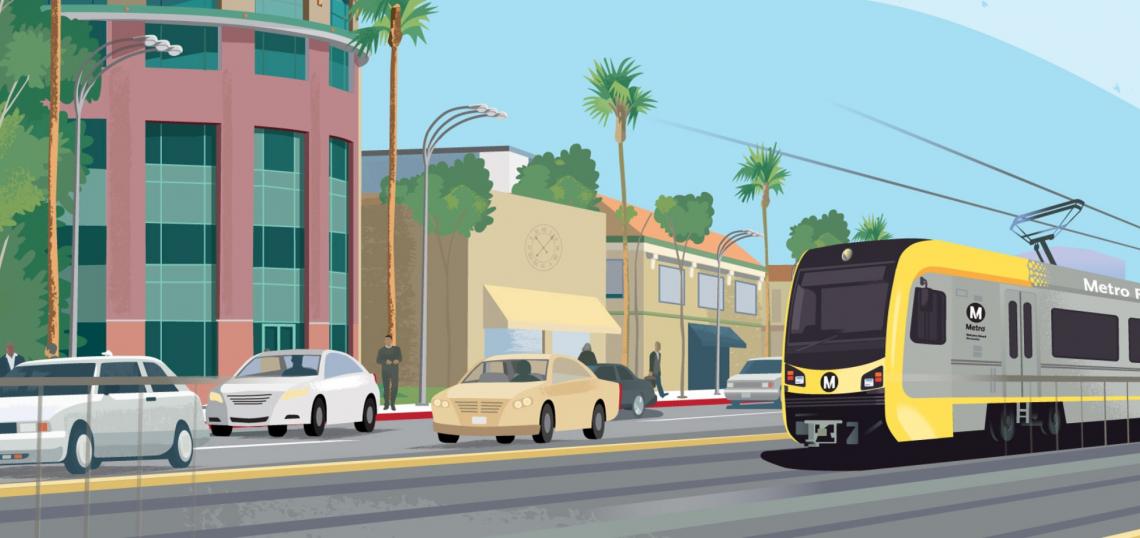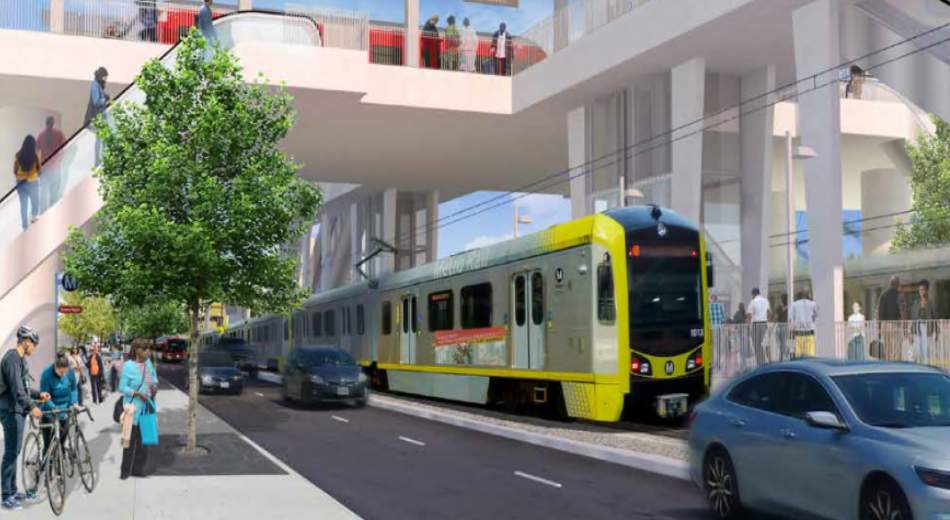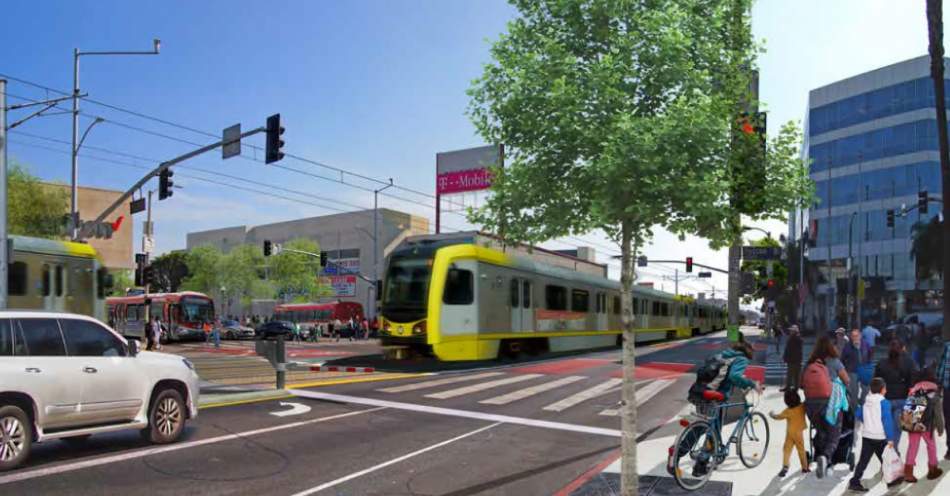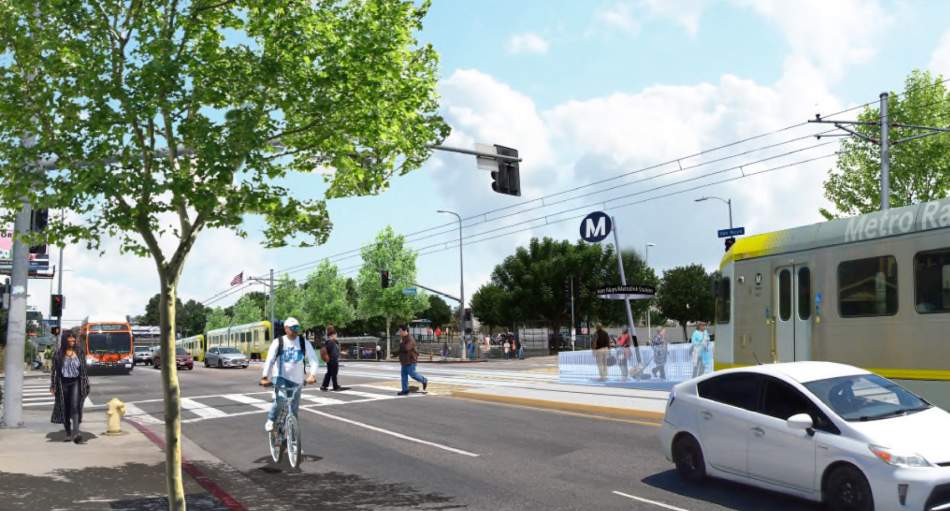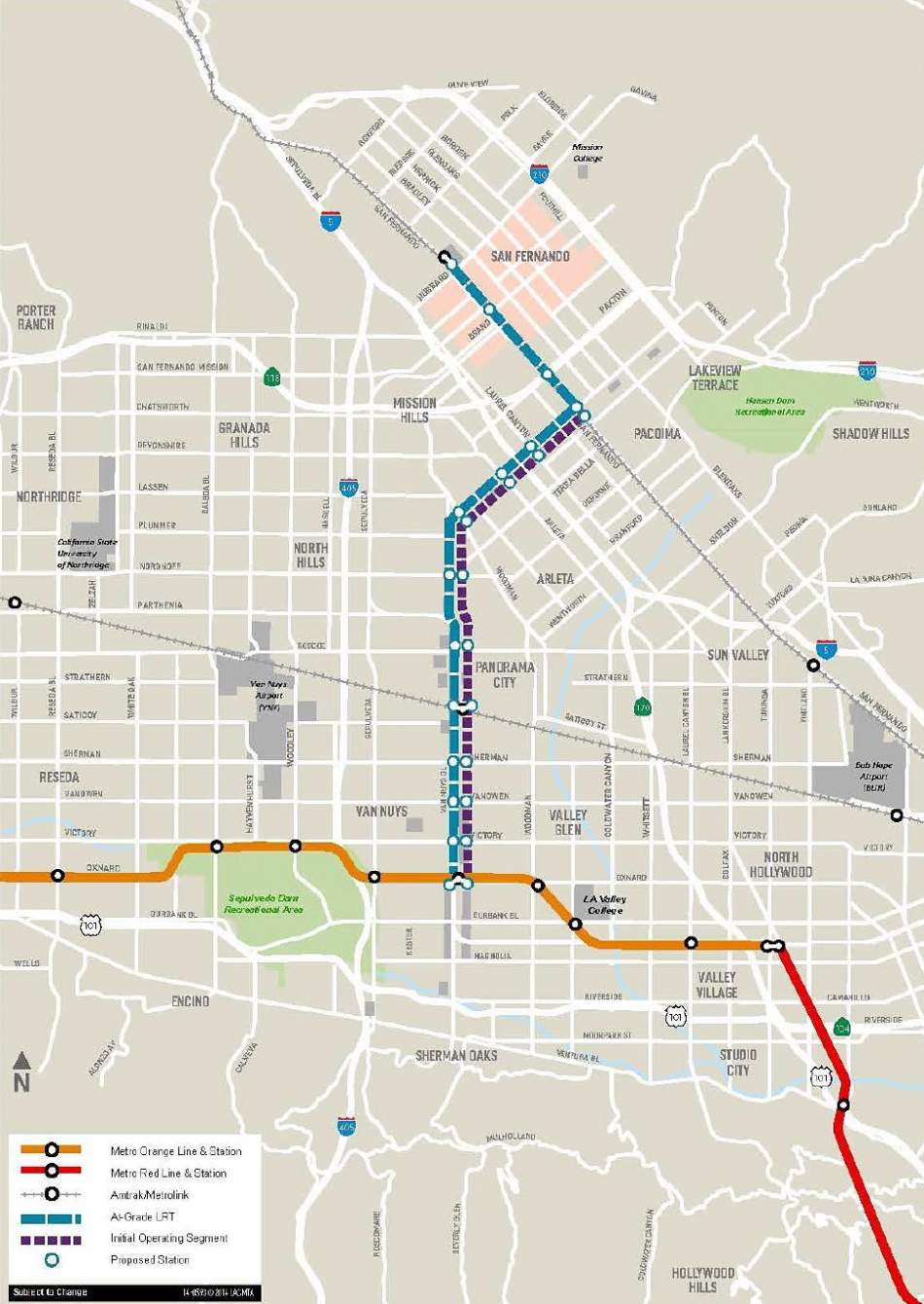A final environmental impact report now being circulated by Metro signals major changes to a proposed light rail line which would connect Van Nuys with communities in the northern San Fernando Valley.
The project, officially known as the East San Fernando Valley Light Rail Line, would run approximately 9.2 miles - largely within the median of Van Nuys Boulevard - with a maintenance and storage facility planned for a 25-acre site at the northwest corner of Van Nuys and Keswick Street.. A total of 14 stops are planned along the corridor, including:
- Van Nuys G Line Station
- Victory Station
- Vanowen Station
- Sherman Way Station
- Van Nuys Metrolink/Amtrak Station
- Roscoe Station
- Nordhoff Station
- Woodman Station
- Arleta Station
- Laurel Canyon Station
- Van Nuys/San Fernando Station
- Paxton Station
- Maclay Station
- Sylmar/San Fernando Metrolink Station
Under a locally preferred alternative adopted by the Metro Board of Directors in 2018, the East San Fernando Valley line would run at-grade, including 6.7 miles of dedicated guideway within the median of Van Nuys Boulevard, and then along 2.5 miles of existing rail right-of-way parallel to San Fernando Road.
Maximum speeds along the street-running segment within Van Nuys Boulevard would be restricted to 35 miles per hour - the same as automobile traffic. Vehicles would be permitted to run at speeds of up to 65 miles per hour within the rail right-of-way at the northern leg of the alignment. End-to-end trips are expected to take roughly 30 minutes.
The San Fernando Road segment of the route would make use of existing gated crossings to block vehicular traffic. While the Van Nuys Boulevard section of the line is not planned to include four-quadrant gates, left-turn gates are proposed at all signalized intersections where vehicles would be permitted to make such turns.
Installation of the light rail line will also require the removal of all curbside parking along Van Nuys Boulevard, as well as the elimination of roughly two miles of bike lanes.
While the overall project remain largely unchanged from the locally preferred alternative approved by the Metro Board in 2018, the final environmental impact report indicates that Metro is now considering building the East San Fernando Valley line in two phases due to increasing construction costs. A full buildout of the locally preferred alternative is now expected to cost between $1.9 billion and $2.2 billion, versus $1.6 billion in funding identified for the project through local and state sources.
Under the phase approach, the East San Fernando Valley Line's initial operating segment would consist of 6.7 miles of track within the median of Van Nuys Boulevard. Metro expects to break ground on the first phase in 2022 and complete construction within five years.
The second phase of the project, running 2.5 miles between Van Nuys Boulevard and the Sylmar/San Fernando Metrolink Station, is expected to break ground within three-to-five years of the initial segment's completion. Construction would occur over a three-to-four-year period, according to the environmental study.
The potential move towards a two-phase project represents another cost-related revision for the East San Fernando Valley light rail line, which was previously slated to include a roughly 2.5-mile segment of subway tunnel through the communities of Van Nuys and Panorama City. However, construction of the below-grade tracks and stations was estimated to swell the project's price tag to nearly $2.8 billion, leading Metro staff to recommend its removal to the board in 2018.
The East San Fernando Valley Line is among a handful of new rail and bus rapid transit projects in the works for the San Fernando Valley, driven in large part by the passage of a countywide sales tax increase through Measure M in 2016.
In addition to the G Line - which is slated for speed improvements in the coming years and a later conversion to light rail - the Van Nuys corridor will intersect with a new bus rapid transit line planned in the North Valley, as well as the high-capacity rail line slated to run through the Sepulveda Pass.
- East San Fernando Valley Light Rail Line (Urbanize LA)




